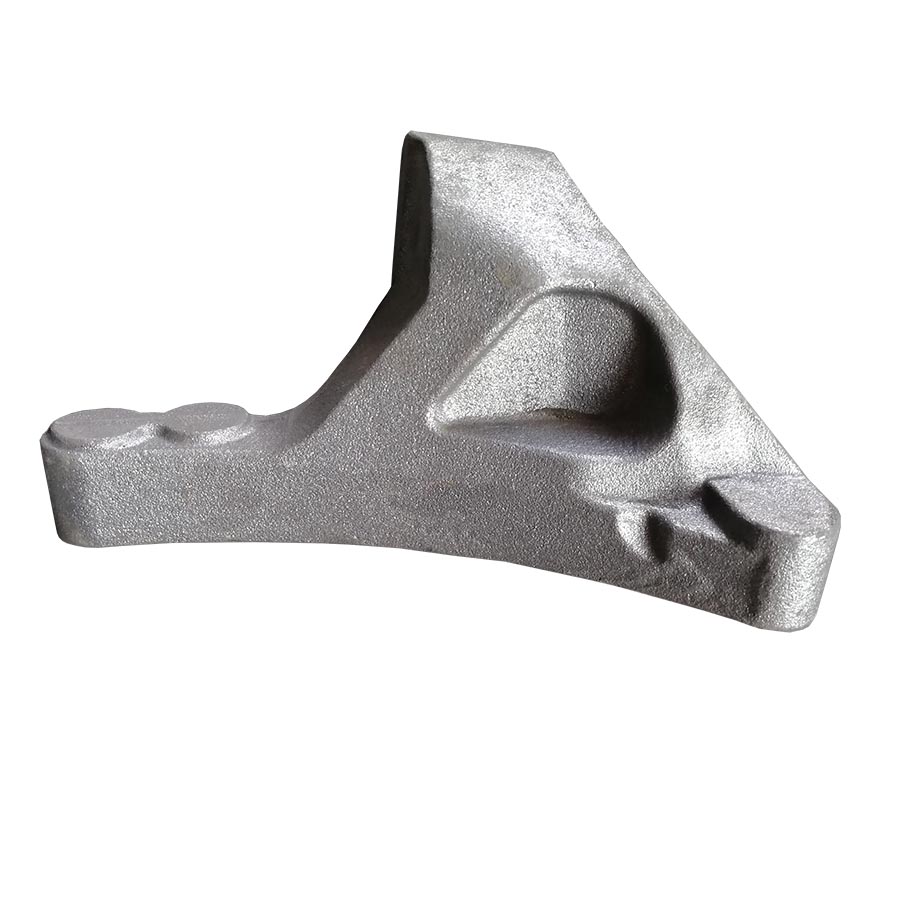
Cast Iron Shell Mould Casting Foundry
Material: Gray Iron, Ductile Iron Process: Shell Mould Casting Weight: 8.52 kg
Cast Iron Shell Mould Casting Foundry
Description
Cast Iron Shell Mould Casting Foundry
▶ Casting Process of Cast Iron:
Green Sand Casting Process. The green sand is basically a wet mixture of sand and clay, no chemical is added. The sand mold is squeezed together and holds its shape. The choice of sand has a lot to do with the temperature at which the metal is poured. At the temperatures that cast iron are poured, the clay gets inactivated by the heat, which is a non-expanding clay. So instead, those that pour cast iron typically work with silica sand that is inexpensive compared to the other sands.
Shell Moulding Casting Process. Shell mold casting process offers better surface finish, better dimensional tolerances, and higher throughput due to reduced cycle times. The materials that can be used with this process are cast irons, and aluminum and copper alloys. The shell molding process produces cost savings solutions for difficult shapes, pressure vessels, weight sensitive parts, and castings requiring superior surface finishes.
▶ Raw Materials of Cast Iron as per standard or customized chemical compositions and mechanical properties.
• Gray Iron: HT150, HT200, HT250, HT300, HT350; GJL-100, GJL-150, GJL-200, GJL-250, GJL-300, GJL-350; GG10~GG40.
• Ductile Iron or Nodular Iron: GGG40, GGG50, GGG60, GGG70, GGG80; GJS-400-18, GJS-40-15, GJS-450-10, GJS-500-7, GJS-600-3, GJS-700-2, GJS-800-2; QT400-18, QT450-10, QT500-7, QT600-3, QT700-2, QT800-2.
▶ Capabilities of Cast Iron Green Sand Casting Components
✔ By handle mould:
• Max Size: 1,500 mm × 1000 mm × 500 mm
• Weight Range: 0.5 kg - 500 kg
• Annual Capacity: 5,000 tons - 6,000 tons
• Tolerances: On Request.
✔ By Automatic Molding Machines:
• Max Size: 1,000 mm × 800 mm × 500 mm
• Weight Range: 0.5 kg - 500 kg
• Annual Capacity: 8,000 tons - 10,000 tons
• Tolerances: On Request.
▶ Capabilities of Cast Iron Shell Molding Casting Components
• Max Size: 800 mm × 600 mm × 500 mm
• Weight Range: 0.5 kg - 300 kg
• Annual Capacity: 5,000 tons - 8,000 tons
• Tolerances: On Request.
▶ How We Inspect the Cast Iron Components:
• Spectrographic and manual quantitative analysis
• Metallographic analysis
• Brinell, Rockwell and Vickers hardness inspection
• Mechanical property analysis
• Low and normal temperature impact testing
• Cleanliness inspection
• UT, MT and RT inspection
▶ Post-Casting Process
• Deburring & Cleaning
• Shot Blasting / Sand Peening
• Heat Treatment: Normalization, Quench, Tempering, Carburization, Nitriding
• Surface Treatment: Passivation, Anodizing, Electroplating, Hot Zinc Plating, Zinc Plating, Nickel Plating, Polishing, Electro-Polishing, Painting, GeoMet, Zintec
• Machining: Turning, Milling, Lathing, Drilling, Honing, Grinding,
▶ General Commerial Terms
• Main workflow: Inquiry & Quotation → Confirming Details / Cost Reduction Proposals → Tooling Development → Trial Casting → Samples Approval → Trial Order → Mass Production → Continuous Order Proceeding
• Leadtime: Estimatedly 15-25 days for tooling development and estimatedly 20 days for mass production.
• Payment Terms: To be negotiated.
• Payment methods: T/T, L/C, West Union, Paypal.
 русский
русский



